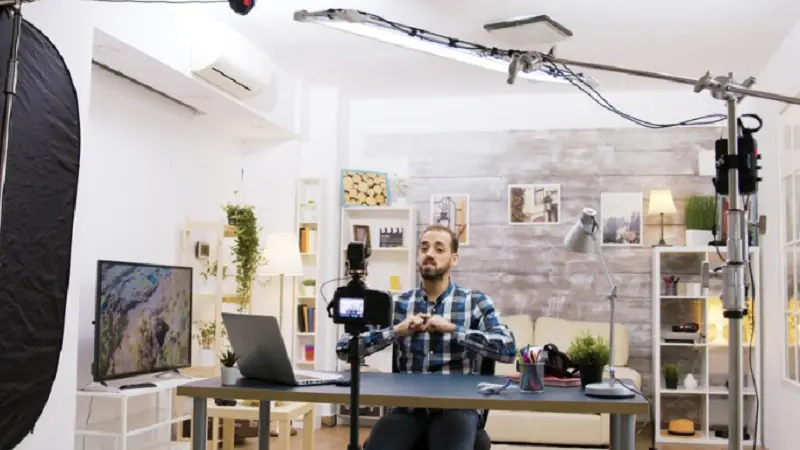Designing the Ultimate Media Room: A Comprehensive Guide to Achieving Audio and Visual Perfection
In today’s entertainment-driven world, Designing the Ultimate Media Room is no longer a luxury – it’s a must-have for homeowners who crave a cinema-level experience from the comfort of their own home. Whether you’re an avid gamer, a movie buff, or a sports fanatic, creating a media room that combines the right audio and visual elements can turn ordinary viewing into extraordinary. For top-notch audio systems that deliver exceptional sound quality and performance, explore the offerings at https://www.proaudioservices.com, where expertise meets innovation.
This guide will walk you through everything you need to know about setting up the ultimate media room for a truly immersive experience.
Start with the Layout: Planning the Perfect Space
Before diving into equipment and technology, the first step in creating a Designing the Ultimate Media Room a layout that works for your space. A well-thought-out room layout ensures that all elements – sound, visuals, and seating – come together harmoniously.
Whether you have a dedicated room or a multipurpose space, focus on creating a layout that positions viewers optimally for both sound and visuals. Room dimensions, window placement, and lighting all play crucial roles.
Seating Arrangements: Comfort Meets Functionality
Comfortable seating is essential in any Designing the Ultimate Media Room. You want to ensure that everyone has a great view of the screen and is seated within the optimal sound range. Stadium-style seating is ideal for larger spaces, while reclining theater chairs or even a large sectional couch can work wonders for smaller rooms.
Fun Fact: The ideal distance from the screen to the first row of seats is 1.5 to 2.5 times the diagonal size of the screen. So, for a 100-inch screen, your first row should be between 12.5 to 15 feet away!
Visuals: Choose the Right Screen for Your Space
The visual experience in your media room is arguably the most important element, and this starts with selecting the right screen. With so many options available, it’s important to choose the one that suits your room and personal viewing preferences.
Projector vs. TV: The Great Debate
When it comes to the ultimate media room, you’ll likely have to decide between a large flat-screen TV or a projector. Both options have their pros and cons.
- Projectors offer a more authentic cinema feel, with the ability to project larger screen sizes. They are ideal for media rooms where you can control lighting. Modern projectors deliver 4K resolution and vivid colors, making them a fantastic option for serious movie enthusiasts.
- Televisions, on the other hand, offer more brightness and contrast, especially in well-lit rooms. With advanced OLED and QLED models, TVs can deliver stunning visuals with rich blacks and vibrant colors. If you plan to use the room for everyday viewing or gaming, a large TV might be the more practical option.
Screen Size: Bigger Isn’t Always Better
Choosing the right screen size depends on the size of your room and the viewing distance. While a massive screen sounds tempting, sitting too close to an oversized display can be overwhelming and uncomfortable. Consider both the size of the screen and the resolution to ensure a crisp, immersive viewing experience. For the latest in home theater technology and custom installations, visit the liaison technology group website to discover solutions that enhance your entertainment experience.
Pro Tip: If you’re opting for a projector, invest in a quality screen. While projecting onto a blank wall works, a specialized projection screen enhances brightness, contrast, and clarity.
Sound Systems: Immerse Yourself in Audio Excellence
The next key ingredient to a successful media room is sound. Even the best visuals fall flat without a professional audio setup. Investing in a quality sound system elevates your entertainment from “watching” to “experiencing.”
Surround Sound Systems: 5.1, 7.1, and Beyond
Surround sound systems are designed to create an immersive audio experience by placing multiple speakers around the room. The numbers – like 5.1 or 7.1 – refer to the number of speakers and subwoofers in the system.
- 1 surround sound systems feature five speakers and one subwoofer. You’ll place speakers in front, behind, and to the sides of the seating area, creating a “surround” effect.
- 1 surround sound systems add two more speakers to the mix, typically placed behind the audience, for even more audio immersion. Perfect for larger rooms!
For the ultimate audio experience, consider Dolby Atmos, which adds height to the sound by placing speakers in the ceiling. With Dolby Atmos, sound moves in three-dimensional space, creating a fully immersive audio environment.
Soundbars: Space-Saving Simplicity
For smaller media rooms or multipurpose spaces, a high-quality soundbar can be a great alternative to a full surround sound system. Many soundbars offer virtual surround sound and even include wireless subwoofers for deep bass without the need for multiple speakers around the room.
Fun Fact: The first “surround sound” system was used in 1940 for Disney’s Fantasia. It was called Fantasound and involved multiple speakers placed around the theater to immerse the audience in the film.
Lighting: Set the Mood for Any Occasion
Lighting can make or break the mood in your media room. Harsh, bright lights can wash out the screen, while poorly placed lighting can create annoying glares and reflections. The trick is finding the right balance to suit both viewing and relaxation needs.
Ambient Lighting: Avoid Glare and Reflections
Choose soft, indirect lighting options that won’t cause glare on your screen. Dim lighting along the walls, in-ceiling fixtures, or even LED strip lighting can create a comfortable environment without interfering with your viewing experience.
Smart Lighting: Control at Your Fingertips
For the ultimate media room setup, consider integrating smart lighting. With a smart system, you can control your lights with your smartphone, tablet, or even voice commands. Some systems even sync with your TV or sound system, changing colors or brightness based on what you’re watching.
Acoustics: Enhance the Sound Quality
While a quality sound system is essential, the room’s acoustics are equally important. Sound bounces off hard surfaces like walls, floors, and ceilings, creating echoes and reducing sound clarity. To get the most out of your speakers, consider adding acoustic treatments to your room.
Acoustic Panels: Control Sound Reflection
Acoustic panels absorb sound and prevent it from bouncing around the room, reducing echoes and improving clarity. They come in various designs and colors, so you can improve your sound quality without sacrificing style.
Rugs and Curtains: Functional and Stylish
Soft materials like rugs, curtains, and upholstered furniture help absorb sound, preventing it from bouncing off hard surfaces. A thick rug can make a big difference in sound quality while adding comfort to your Designing the Ultimate Media Room.
Pro Tip: Hardwood floors may look great, but they reflect sound. Consider adding plush rugs and upholstered seating to minimize sound reflections.
Fun Facts About Audio and Visual Technology
- The first home theater system, developed in the 1950s, consisted of a TV, a reel-to-reel film projector, and a mono speaker. We’ve come a long way since then!
- Did you know that projector screens are measured diagonally, just like TVs? The biggest home theater screen on record measures a staggering 370 inches!
- The “uncanny valley” effect in CGI (computer-generated imagery) happens when animated characters look almost human but not quite, creating a sense of discomfort in viewers.
Creating the ultimate media room is all about balancing audio, visuals, and comfort. Whether you’re planning a full-scale theater experience or a cozy spot to binge-watch your favorite shows, the right technology and design choices can elevate your space to new heights. From the perfect seating arrangement to professional-grade sound systems, every detail matters.
Now all that’s left to do is grab some popcorn, dim the lights, and enjoy the show!





